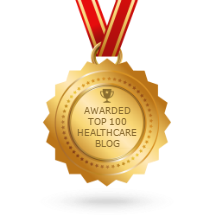 In the 1970s, infection control and prevention became a specialty in it's own right. Since then, the role and expertise of the individual tasked with preventing and controlling infections has grown and evolved. Originally, individuals charged with hospital infection control typically had a nursing background and executed tasks closely related to a clinical nurse specialist - supervision, education, reporting, and clinical expertise. However, recent changes in accountability and hospital finance management have spurred an expansion of duties for this individual, now more appropriately called an "Infection Preventionist." What do these individuals do in a hospital? What are their job expectations and core competencies? Join us as we explore this vital profession within the field of healthcare.
In the 1970s, infection control and prevention became a specialty in it's own right. Since then, the role and expertise of the individual tasked with preventing and controlling infections has grown and evolved. Originally, individuals charged with hospital infection control typically had a nursing background and executed tasks closely related to a clinical nurse specialist - supervision, education, reporting, and clinical expertise. However, recent changes in accountability and hospital finance management have spurred an expansion of duties for this individual, now more appropriately called an "Infection Preventionist." What do these individuals do in a hospital? What are their job expectations and core competencies? Join us as we explore this vital profession within the field of healthcare.
In 2012, the Association of Professionals in Infection Control (APIC) presented a Competency Model for Infection Preventionists (IPs), with six core competencies identified by the Certification Board of Infection Control and Epidemiology (CBIC). Today, the list has expanded to the 8 categories below.
-
Identification of Infectious Disease Processes
The IP has to know everything about pathogens: Types, where they thrive, which tests identify them, and how to eliminate them from patients and surfaces. This means the IP is engaged in clinical, laboratory, environmental, and pharmaceutical activities.
-
Surveillance and Epidemiological Investigations
Daily activities for the IP involve surveillance and monitoring of infection prevention protocols. This means collecting and analyzing data and taking steps if any red flags are spotted. In the event of an outbreak, the IP conducts the investigation, including collecting data and communicating with external agencies.
-
Preventing/Controlling the Transmission of Infectious Agents
The IP develops, reviews, and updates the facility's protocols and procedures for infection control and prevention. This includes emergency/disaster management and, in some cases, preparing for threats such as bioterrorism. But the major work goes into the creation, communication, and implementation of daily protocols involving hand & raspatory hygiene, PPE, safe injection & compounding practices, and even the placement, isolation, and transfer pf patients.
-
Employee/Occupational Health
Often, the IP is also responsible for occupational health issues such as immunizations, exposure response, and risk assessment. The IP will be the key liaison with a hospital's occupational health department whenever communicable diseases are involved.
-
Management and Communication (Leadership)
It is impossible to overstate the importance of this core competency to the IP and her/his facility. The IP performs risk assessments, action plans, cost benefit analyses, and measurement goals. The head IP and staff are instrumental in not only the planning of infection control programs, but their implementation and monitoring. This involves significant staff training, but also the responsibility of motivating the entire hospital staff to be engaged in infection control; the IP is instrumental in creating a culture that supports infection control efforts.
-
Education and Research
In an ever-evolving field, the IP must stay abreast of current research in infection control, as well as new products and interventions that are available. They must then transfer their knowledge to their staff as well as to the facility staff as a whole. Summarizing current clinical findings, preparing caregivers for home-based infection control, presenting data and reports to the hospital C-suite or Board -- the IP is always a teacher.
-
Environment of Care
The built enviroment, utility systems, furnishings, and surfaces all provide a vector for transmission for pathogens. There are also an overwhelming number of interventions to stop transmission from innovative processes to emerging technologies. The IP works with stakeholders to monitor pathogens, set protocols and reduce the risk of transmission. Construction /renovation projects push these concerns into overdrive and the IP is the one to navigate the hospital safely through these times.
-
Cleaning, Disinfection, Sterilization of Medical Devices and Equipment
The IP maintains up to date protocols for processing items based on the application/ use, pathogen and risk level. They answer questions like items single/ multi-use, required in house cleaning / disinfection / sterilization, external re-processing.
Although the above categories represent the existing sections of the CIC exam, in 2019 APIC revised their model to better reflect the evolution of the filed with greater emphasis on continual professional development after initial certification with 6 revised domains each comprised of supporting sub domain skills. The new model also recognizes that professionals learn concepts, hone skills with experience to transition from novice through proficiency stages and finally become experts.
As you can see, the hospital IP is a versatile leader whose central mission is ensuring safety of all who enter the hospital. The position demands expertise in microbiology, epidemiology, statistics, human resources, education, public policy, and clinical practice. To say they wear many hats is to put it mildly! In the ongoing battle against dangerous pathogens, the IP is drill sergeant, bunk mate, soldier, medic, general and diplomat.
| Read the how to become an Infection Preventionist post about the training and certifications required to join this field. |  |
Editor's Note: This post was originally published in May 2018 and has been updated for freshness, accuracy and comprehensiveness.

